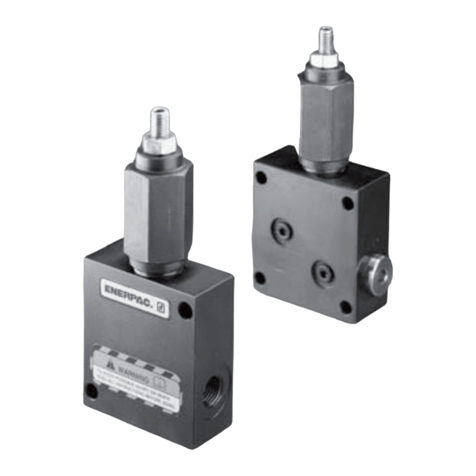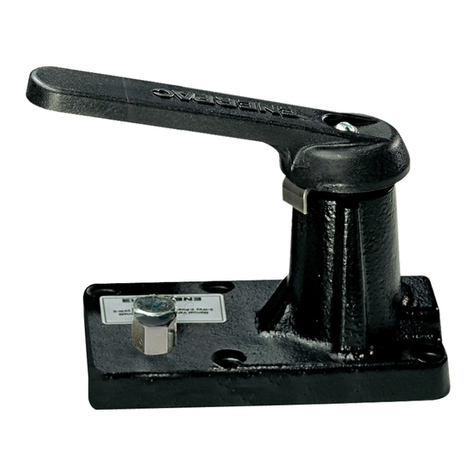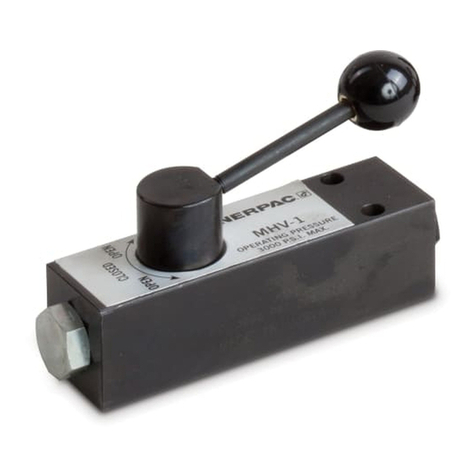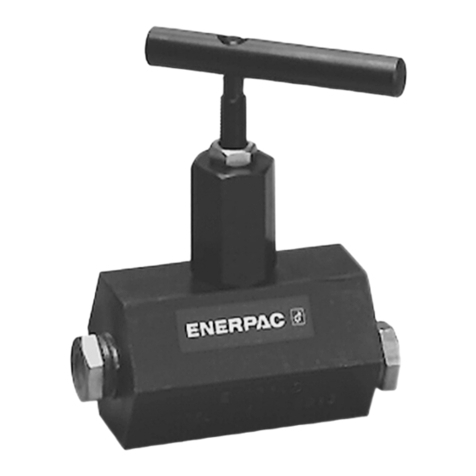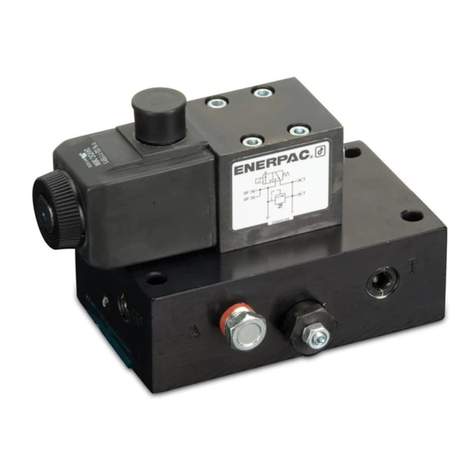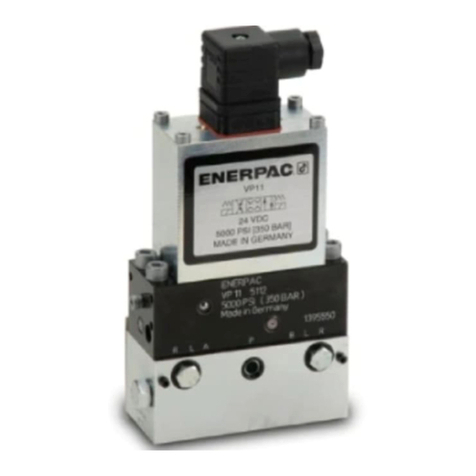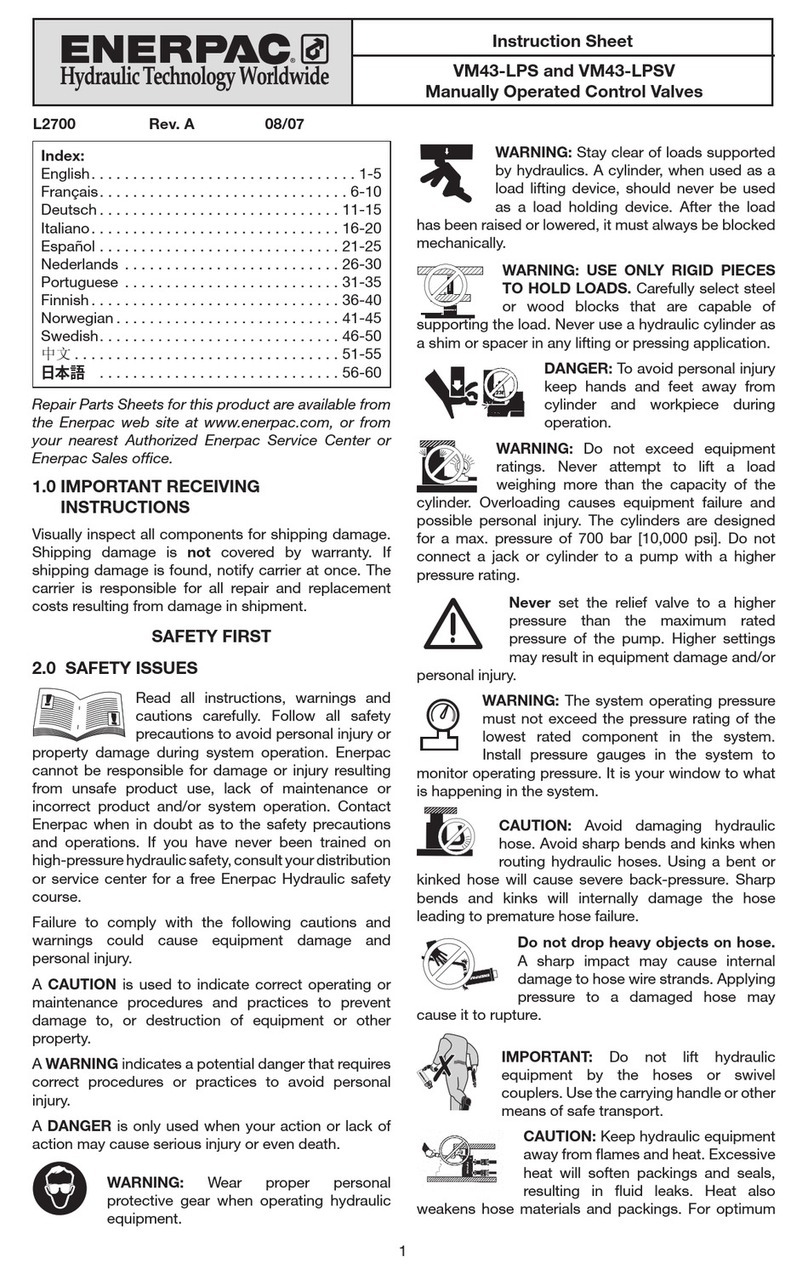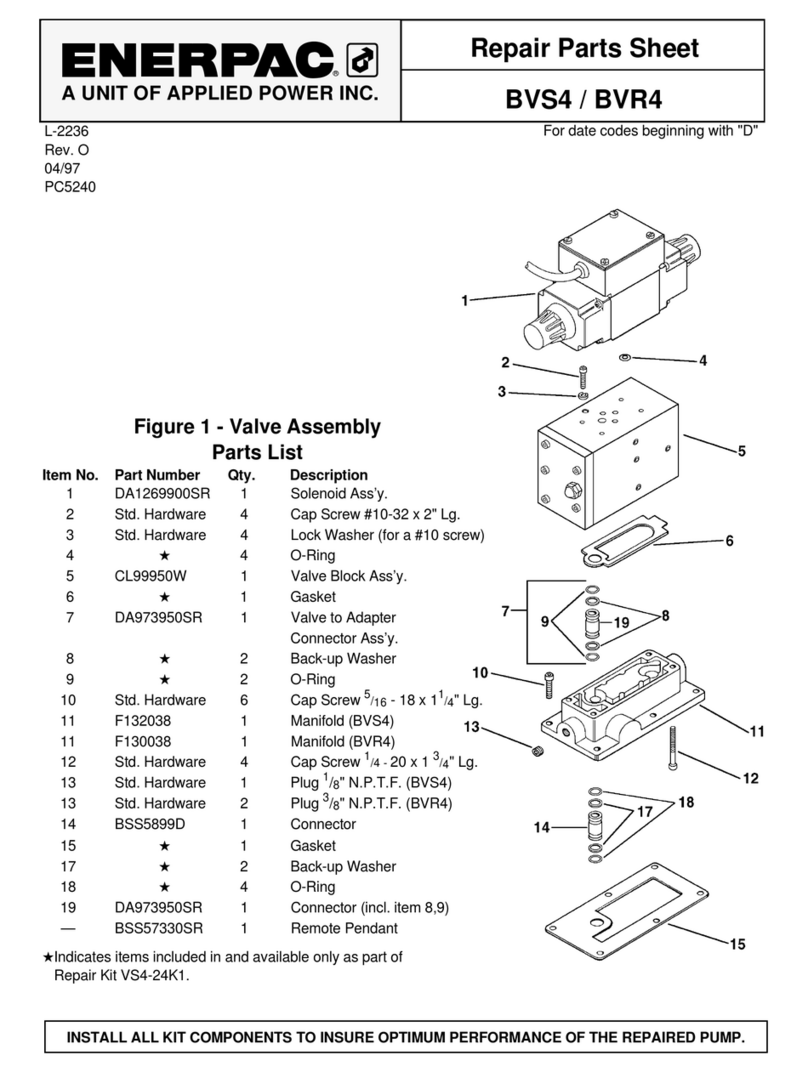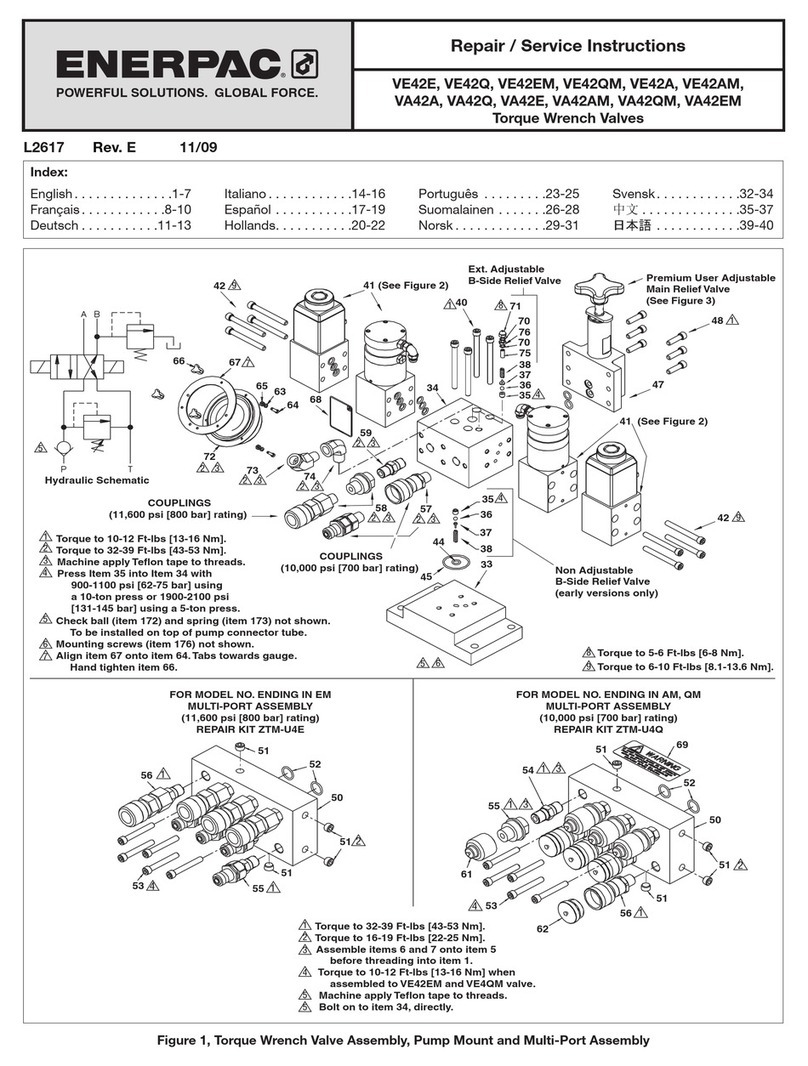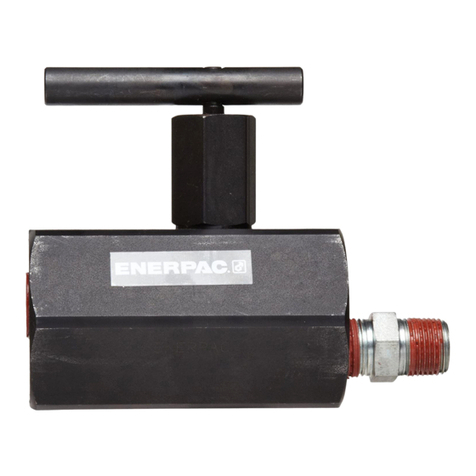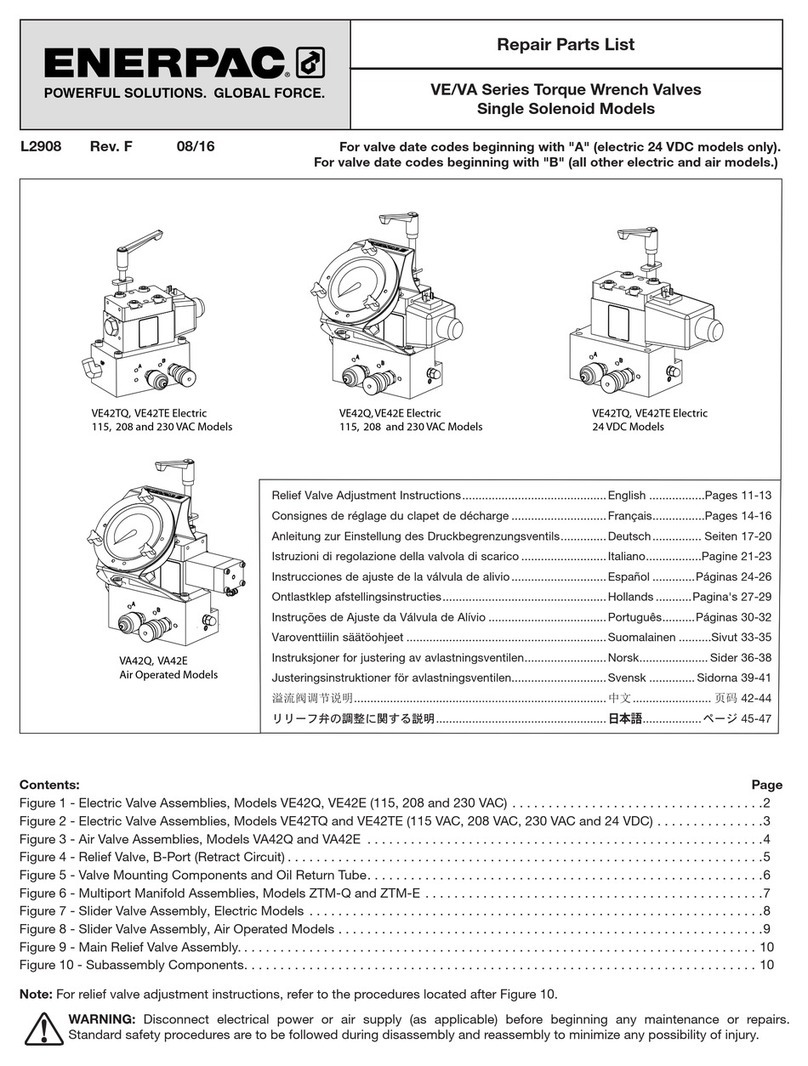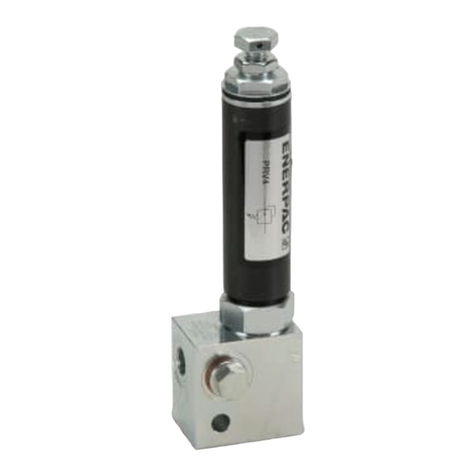7
tap wrench. Do not use an electric drill. After flushing
the relief bore, lightly stake the relief ball to the seat.
3. Replace all worn or damaged ball seats and springs.
4. Replace balls, gaskets and seals with new items from
the VS324K kit.
5. Check the condition of solenoid plunger seals.
Replace where extruded or damaged. A slight circular
indentation on the seals will occur as a result of use.
This is not necessarily harmful unless the seal's
surface is cut or torn. Make certain that the seal in the
lower solenoid moves freely against the spring in the
plastic plunger insert.
6. Replace seats and components. Coin all seats by
placing the ball on the seat and pressing to 200 psi (14
bar) on a 10-ton press. Tighten seats to 27 ft-lbs.(37
Nm). Replace main check ball and components.
Replace top plug.
7. Insert coupler into cylinder port. Apply pressure with a
hand pump. Valve should hold pressure. This test will
indicate leakage through top pilot ball seat and main
check ball.
8. If leakage is indicated through main check ball, the
seat may be loose.This seat is not replaceable. The
body will have to be replaced. Order M693190W. Note:
A slightly damaged seat may be repaired at a qualified
Enerpac service center.
ADJUST MAIN CHECK
1. Install valve on remote mounting block. Remove top
plug. Plug outlet (tank) port of adaptor block. Place a
1000 psi (70 bar) gauge in-line from pump. Make sure
the top thread of the adjustment screw (item 9, figure
3) is flush with the top of the valve block, then turn the
adjustment screw in (clockwise) 17 to 18 turns.
Pressurize the inlet port of the remote block to 280 psi
(19 bar).
2. Complete assembly of the valve.
ADJUST PILOT & PILOT RELIEF
1. Place on test pump. Do not connect to cylinder.
Energize valve. Place toggle on Pushbutton Station in
automatic retract position.
2. Turn in the lower pilot adjusting screw (figure 3, item
16) to 10 ft-lbs. (13 Nm). (Note: The spring should
bottom-out.) Back out the upper pilot adjusting screw.
Place a gauge in the lower port. Depress the advance
button. Set the lower pilot relief on the port side to 475
psi (33 bar) full open by using the lower pilot relief
adjusting screw (figure 3, item 20). After setting the
lower pilot relief pressure, set the lower pilot pressure
to 180-200 psi (12-14 bar) using the lower pilot
adjusting screw (figure 3, item 16).
3. Turn in the upper pilot adjusting screw (figure 3, item
16) to 10 ft-lbs. (13 Nm). (Note: The spring should
bottom-out.) Move the gauge to the upper port.
Depress the advance button. Set the upper pilot relief
pressure on the port side to 475 psi (33 bar) full open
by using the upper pilot relief adjusting screw (figure 3,
item 20). After setting the upper pilot relief pressure, set
the upper pilot pressure to 180-200 psi (12-14 bar)
using the upper pilot adjusting screw (figure 3, item 16).
4. If the valve fails to build sufficient load to adjust the
upper pilot, it may be necessary to slightly raise the
lower pilot relief setting. Depress the advance button
and carefully turn in (clockwise) the pilot relief
adjusting screw until the valve begins to build load.
5. After setting pilot pressure, connect to single-acting
cylinder and gauge.
6. Test valve for 25 full cycles, observing operating and
holding. Check with automatic and manual release.
Check holding at several intervals. freely against the
spring in the plastic plunger insert.
7. Replace seats and components. Coin all seats by
placing the ball on the seat and pressing to 200 psi (14
bar) on a 10-ton press. Tighten seats to 27 ft-lbs.(37
Nm). Replace main check ball and components.
Replace top plug.
8. Insert coupler into cylinder port. Apply pressure with a
hand pump. Valve should hold pressure. This test will
indicate leakage through top pilot ball seat and main
check ball.
9. If leakage is indicated through main check ball, the
seat may be loose.This seat is not replaceable. The
body will have to be replaced. Order M693190W. Note:
A slightly damaged seat may be repaired at a qualified
Enerpac service center.
